8 Things We Now Know About Sharks & Rays
The ocean covers 70 percent of the Earth’s surface. According to NOAA, just 26.1 percent of the global seafloor had been “mapped with high-resolution technology.” Clearly, there’s a lot we don’t know about these vast, deep waters and their inhabitants. With hundreds of different identified shark and stingray species, we still have so much to discover! Here are eight shark- and stingray-related findings that have made the headlines in the 12 months since Greater Cleveland Aquarium celebrated Fin Fest 2023.
1: THE STINGRAY SHUFFLE
Recent scientific findings suggest that shuffling can help those who want to avoid being struck by stingrays buried in the sand. Vibrations from these little movements alert rays and give them time to move out of harm’s way. Taking tiny steps also means surfers and ocean lovers are less likely to squish a ray midbody. Stepping down where the rays’ organs are located “makes them strike 85 percent of the time,” say researchers from California State University, Long Beach.
2: LEAN & NOT SO MEAN?
The megalodon has so captured the popular imagination that despite being extinct for millions of years, it is the titular star of a box office franchise starring Jason Statham. Depicted as massively terrifying on the big screen, scientists reevaluating fossil records think the “the meg” might have been somewhat longer, possibly less agile and significantly thinner than previously believed.
3: OH BABY!
A wildlife photographer and filmmaker took footage of a shark off the coast of Carpinteria, California, that might be a newborn great white. IF (and that’s a big IF) it is a baby great white pictured, the imagery could verify that female sharks give birth in the area from Santa Barbara to Baja California. “Anything that gives clues to the lifecycle of their reproductive behaviors of any species is really important in understanding and preventing their decline or extinction,” noted Northeastern University professor Dan Distel.
In related news, the existence of a shark nursery near the “Big Apple” was confirmed. The urban location is believed to be “the primary nursery for North Atlantic great whites, where juveniles learn to feed, navigate and evade predators in relative safety.”
4: PALEONTOLOGY ROCKS
Two new-to-science sharks—Troglocladodus trimblei and Glikmanius careforum—were identified via fossils found in Mammoth Cave National Park, an area that would have been covered by a seaway hundreds of millions of years ago. Meanwhile, an exceptionally well-preserved fossil found in a Mexican quarry is expanding our understanding of the body shape and feeding habits of a distant relative of the modern-day great white shark.
5: WARMING UP TO THE IDEA
Researchers were surprised to only recently discover the globally endangered basking shark might be partially warm-blooded. While the majority of fish are ectothermic and cannot regulate their body temperatures, a few have been found to be regional endotherms, meaning they cannot generate heat in parts of their bodies. “The basking shark is a shining example of how little we know about shark species in general,” zoologist Haley Dolton commented.
6: GHOST HUNTERS
A deep-sea survey discovered a new fish species with an otherworldly appearance. A distant shark and ray relative, the primitive chimaera, or ghost shark, had “giant, glow-in-the-dark eyes, a huge head and feather-like fins.”
7: NOT KISSING COUSINS
When an apparent pregnancy of a lone female ray in North Carolina sparked wild public speculation, the public learned that (due to anatomy and genetics) there was no way that a round stingray could have mated with a neighboring bamboo shark. Although some species of sharks and rays are capable of parthenogenesis, or asexual reproduction, it was eventually reported that this stingray had a rare reproductive disease that led to its loss.
8: GOING THE DISTANCE
Researchers documented a silky shark traveling 17,190 miles—by far the most extensive migration recorded to-date for this overfished and vulnerable species. Tracking showed “Genie” journeying into international waters. The study’s authors believe the long migratory pathway reinforces that international coordination is imperative to help reverse the declining populations of silky sharks.
Follow us anytime on Facebook and Twitter for information on these elasmobranchs and other aquatic animals.

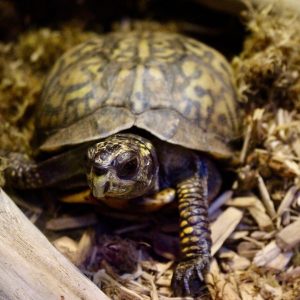
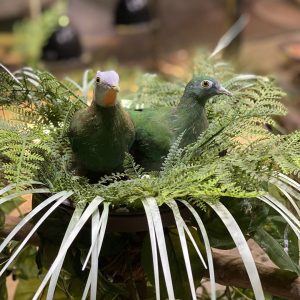
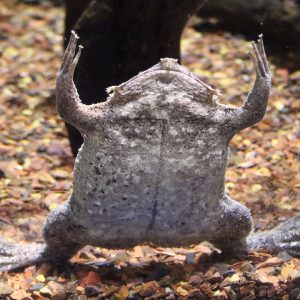
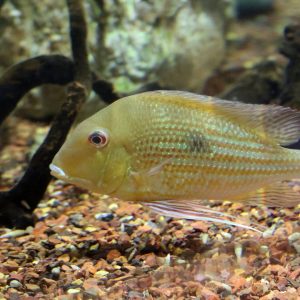
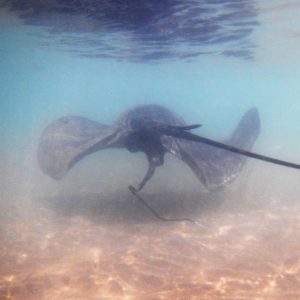
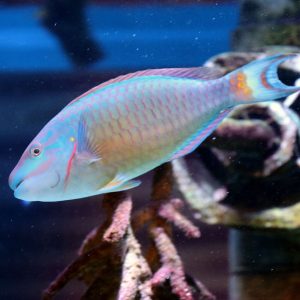
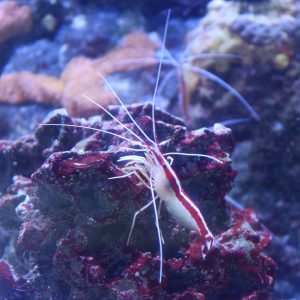
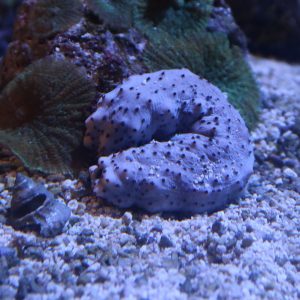
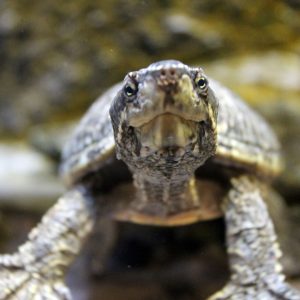
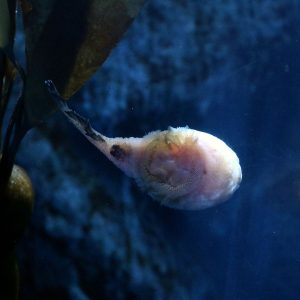
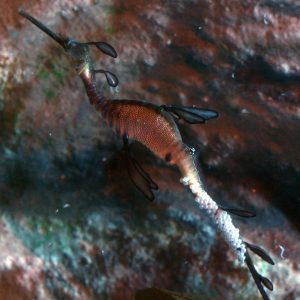
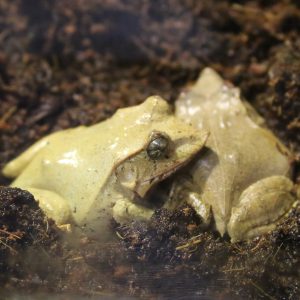
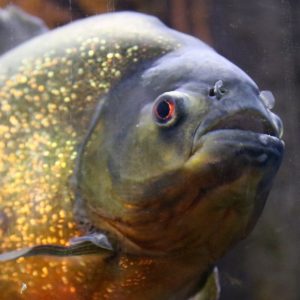
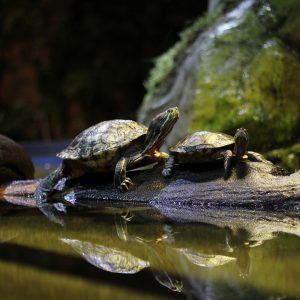
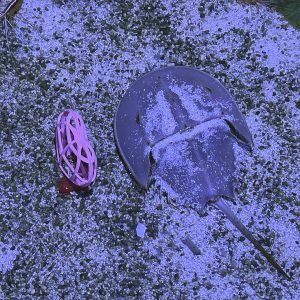

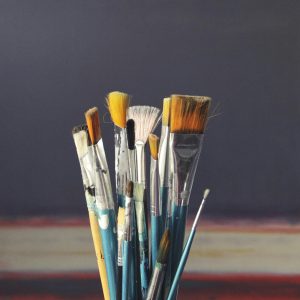
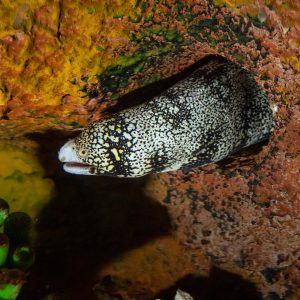
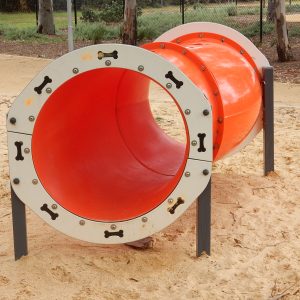
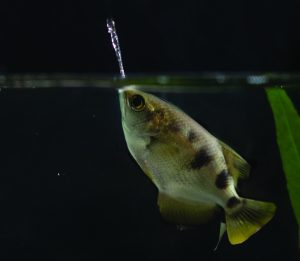
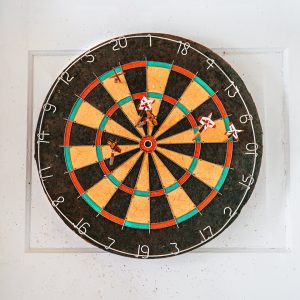

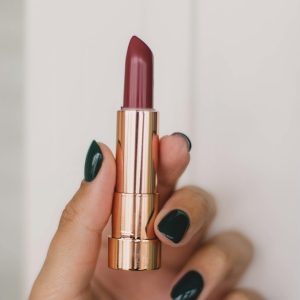
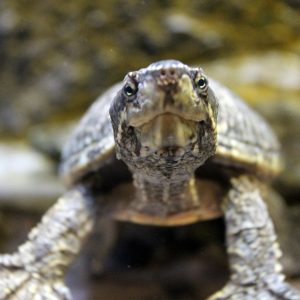
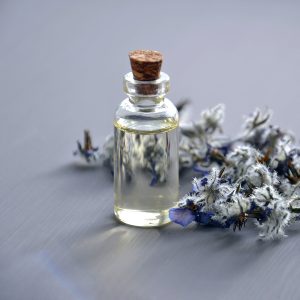

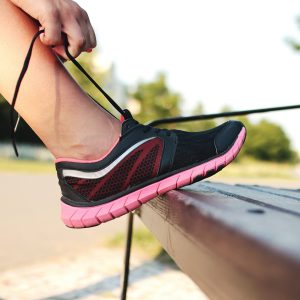
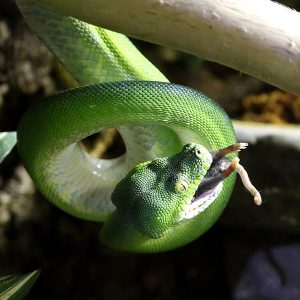
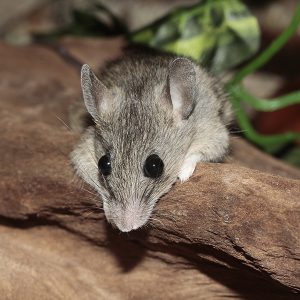
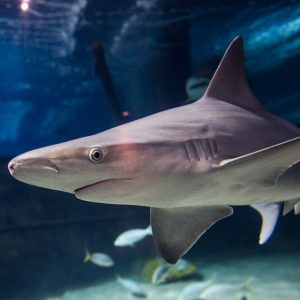
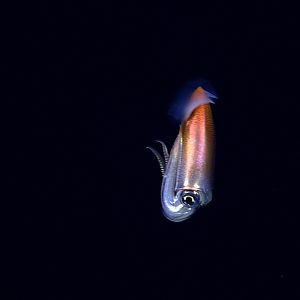
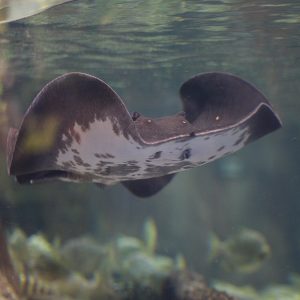
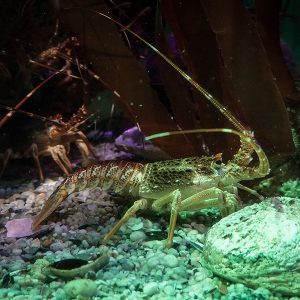
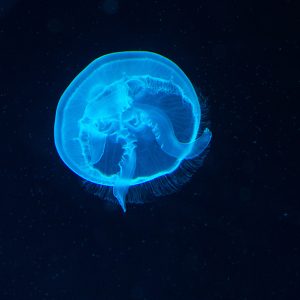
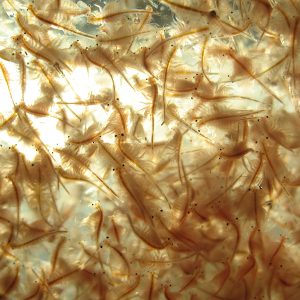
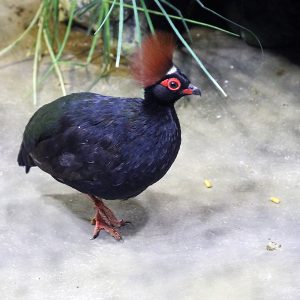
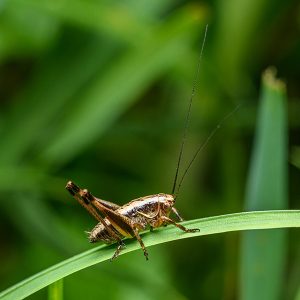
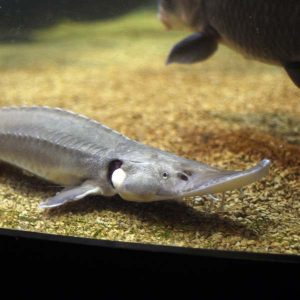 Shovelnose Sturgeon – Check out that shovel-shaped snout.
Shovelnose Sturgeon – Check out that shovel-shaped snout.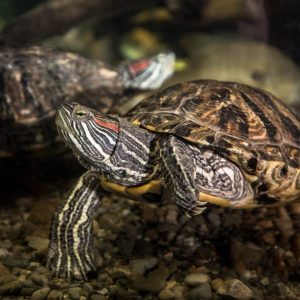 Red-eared Slider – This turtle is named for the red patch on its ear AND the way it slides into the water when startled.
Red-eared Slider – This turtle is named for the red patch on its ear AND the way it slides into the water when startled.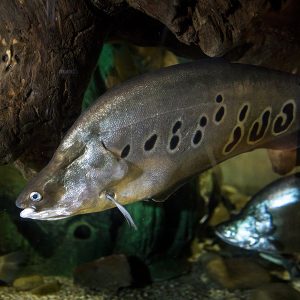 Clown Knifefish – This fish’s knife-like shape allows it to swim both forwards and backwards.
Clown Knifefish – This fish’s knife-like shape allows it to swim both forwards and backwards.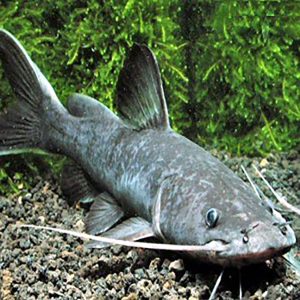 Crystal-eyed Catfish – Frank Sinatra might have been “ol’ blue eyes,” but this catfish gets attention for its light blue peepers.
Crystal-eyed Catfish – Frank Sinatra might have been “ol’ blue eyes,” but this catfish gets attention for its light blue peepers.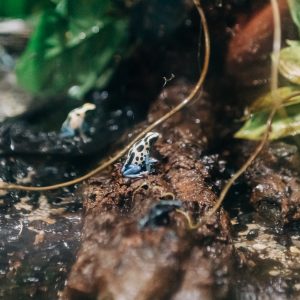 Dyeing Poison Dart Frog – This name comes from an unverified legend that indigenous people used these colorful frogs to dye parrot feathers.
Dyeing Poison Dart Frog – This name comes from an unverified legend that indigenous people used these colorful frogs to dye parrot feathers.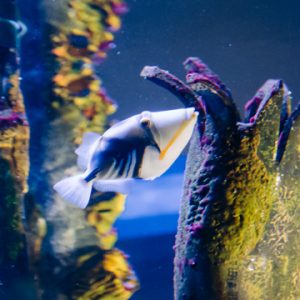 Picasso Triggerfish – This peculiar-looking fish has bright, artsy colors AND a dorsal spine will raise when startled.
Picasso Triggerfish – This peculiar-looking fish has bright, artsy colors AND a dorsal spine will raise when startled.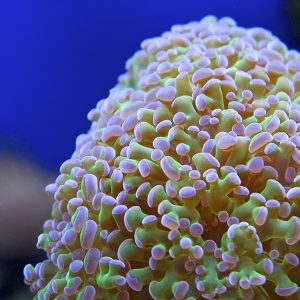 Hammer Coral – Note the hammer shape of these coral polyps.
Hammer Coral – Note the hammer shape of these coral polyps.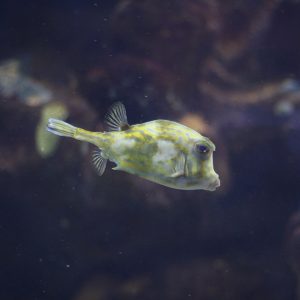 Scrawled Cowfish – The “horns” above its eyes and irregular body markings are what give the scrawled cowfish a distinctive appearance.
Scrawled Cowfish – The “horns” above its eyes and irregular body markings are what give the scrawled cowfish a distinctive appearance.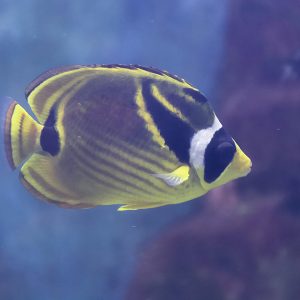 Raccoon Butterflyfish – This butterflyfish is named for the black-and-white “mask” around its eyes.
Raccoon Butterflyfish – This butterflyfish is named for the black-and-white “mask” around its eyes. Black Drum – This fish can make drumming or croaking sounds with muscle movement around its swim bladder.
Black Drum – This fish can make drumming or croaking sounds with muscle movement around its swim bladder.